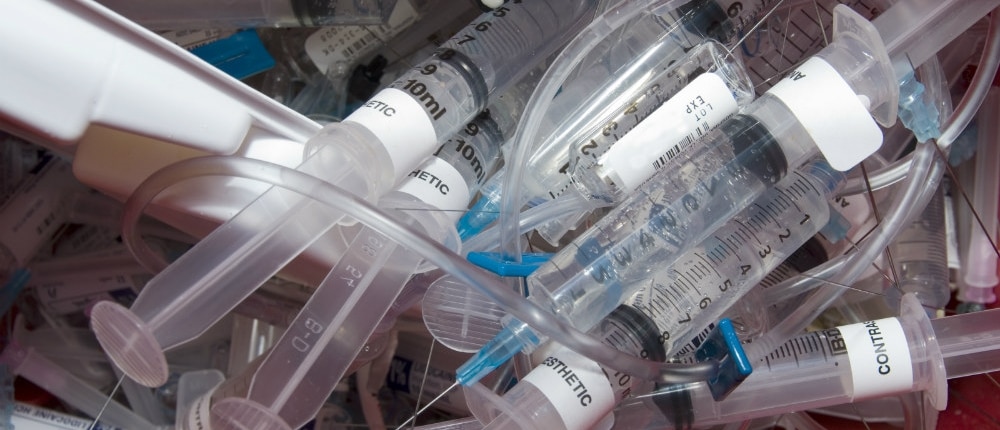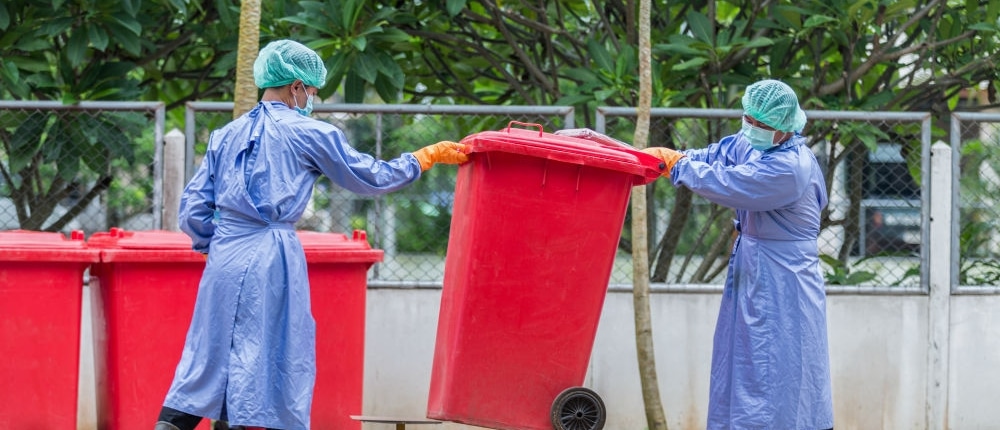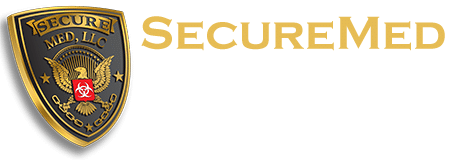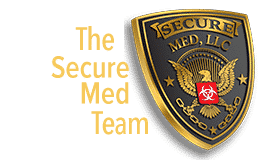
5 Mistakes to Avoid with Your Medical Waste Disposal
If your medical practice falls in line with the majority of the medical field these days, then you are busy! And unfortunately, when people are busy, mistakes can happen – human error is a part of life. However, even a single medical waste disposal accident could have serious consequences for your patients, your staff, and even the environment. Here is a list of five common medical waste disposal mistakes, with tips for how to ensure your facility avoids them.
- Your Staff Isn’t Trained
This is where it all begins. Your business hinges on having a great staff, but they need to be trained on a regular basis to stay up-to-date with all of the state and federal guidelines and regulations that govern medical waste. For instance, did you know that new employees must complete OSHA’s Bloodborne Pathogen training within ten days after being hired? Most providers provide compliance training, and some even include it with their waste services agreement. If you’re short on time and/or money, you can look for convenient online compliance training to streamline the process.

- Your Waste is Mixed Up
Combining medical waste with other waste is a big mistake. While it may not have been a needle (everyone knows how to dispose of needles, right?), but when an item is a sharp, everything in the bin becomes contaminated, and your employees risk exposure to dangerous pathogens. Putting items in the wrong container is a mistake, but when that item is a sharp, the stakes are even higher. Understanding the difference between the different types of waste is key. Make sure your staff knows proper collection and segregation processes. Always use red bags or containers for medical waste and never include it with regular garbage. Post handy guidelines for medical waste segregation where employees can quickly reference a chart if they have any questions.
- Your Medical Waste Isn’t Packaged, Labeled or Stored Correctly
Generally, if you’re using a professional medical waste service company, they provide the appropriate medical waste containers for your medical waste. However, the packaging and labeling of that waste is your facility’s responsibility. It’s crucial to use the appropriate containers during on-site handling, for storage at your medical practice, and during transportation. Safe containment and proper labeling is a key part of medical waste compliance. Make sure all containers are rigid, leak-proof, and properly sealed. Proper packaging would include things like placing solid biohazardous waste in a container lined with two red biohazard bags. For proper labeling, you can mark biohazard waste containers with the biohazard symbol. In following proper storage procedures, pathological waste (stored in the appropriate container) should be stored in a refrigerator or cold room. For even more security, you can designate someone in your facility to routinely check your containers (particularly if they are reusable) to make sure they are not damaged or improperly labeled.
- You Don’t Know How to Improve
Medical waste compliance is a continuous process – it’s not a one-and-done scenario. Staying compliant is easier if you have a process already in place to document and measure your particular facility’s progress, because there is no standard procedure that fits every medical facility out there. Setting up the appropriate compliance metrics for your practice can help you track areas that need improvement as well as document improvements and milestones to share with your staff to help keep them motivated to handle medical waste properly. Your compliance metrics should cover each of the main elements of your compliance programs. One acronym we found was to be SMART – “Specific, Measurable, Achievable, Reasonable, and Timely”.
- You Don’t Know What Happens to Your Medical Waste Goes When It Leaves Your Facility
Out of sight, out of mind—right? Wrong. Your medical waste is still your responsibility and a liability once your waste leaves your facility. One provision of the Resource Conservation Recovery Act (RCRA) is cradle-to-grave liability, which means you remain responsible for RMW (regulated medical waste) from the time it is generated and stored, to its ultimate disposal and more. You must ensure that your medical waste has been handled in a way that protects both human health and the environment. Make sure your facility receives the necessary documentation from your waste services provider, including a waste manifest form and a certificate of destruction after your waste is treated – the entire waste disposal process must be documented to maintain compliance. Make sure you examine your waste manifest form carefully to make sure you know the exact route your medical waste will take.

Be Aware
Unfortunately, these are just a few of the many mistakes than can be made when it comes to proper handling and disposal of medical waste. Although it can be a complicated process, improper handling and disposal of RMW can endanger everyone who enters your facility – your patients, medical staff, and even the general public, and that can expose your practice to citations and fines. Your service provider can answer any questions you have about the handling, treatment, disposal, and final destruction of your practice’s medical waste.
If you’re in the greater Birmingham or Huntsville, AL areas, and you’re looking for a hard-working, reputable waste service company, contact us today at SecureMed. We can assist with all of your medical waste disposal needs!







